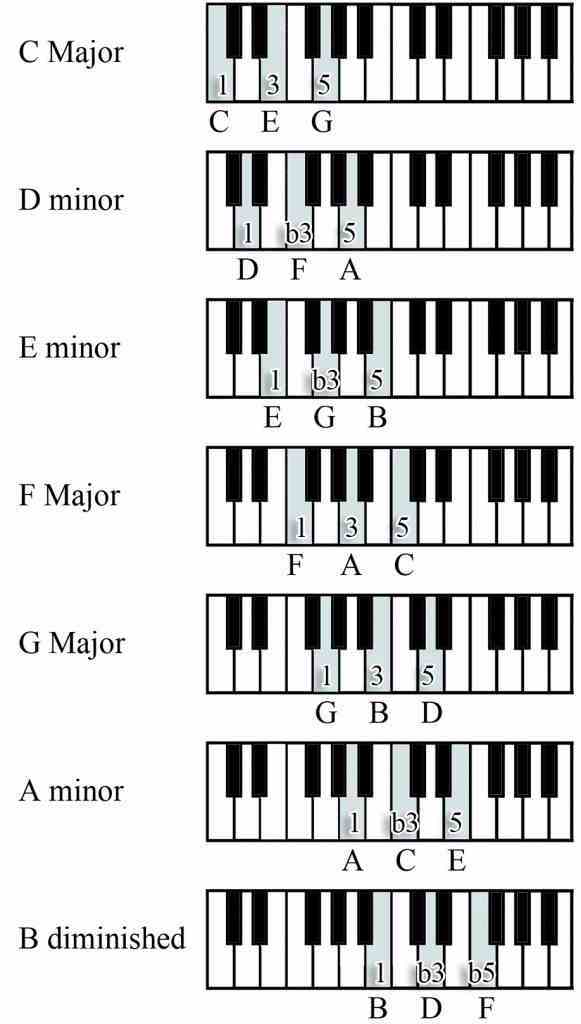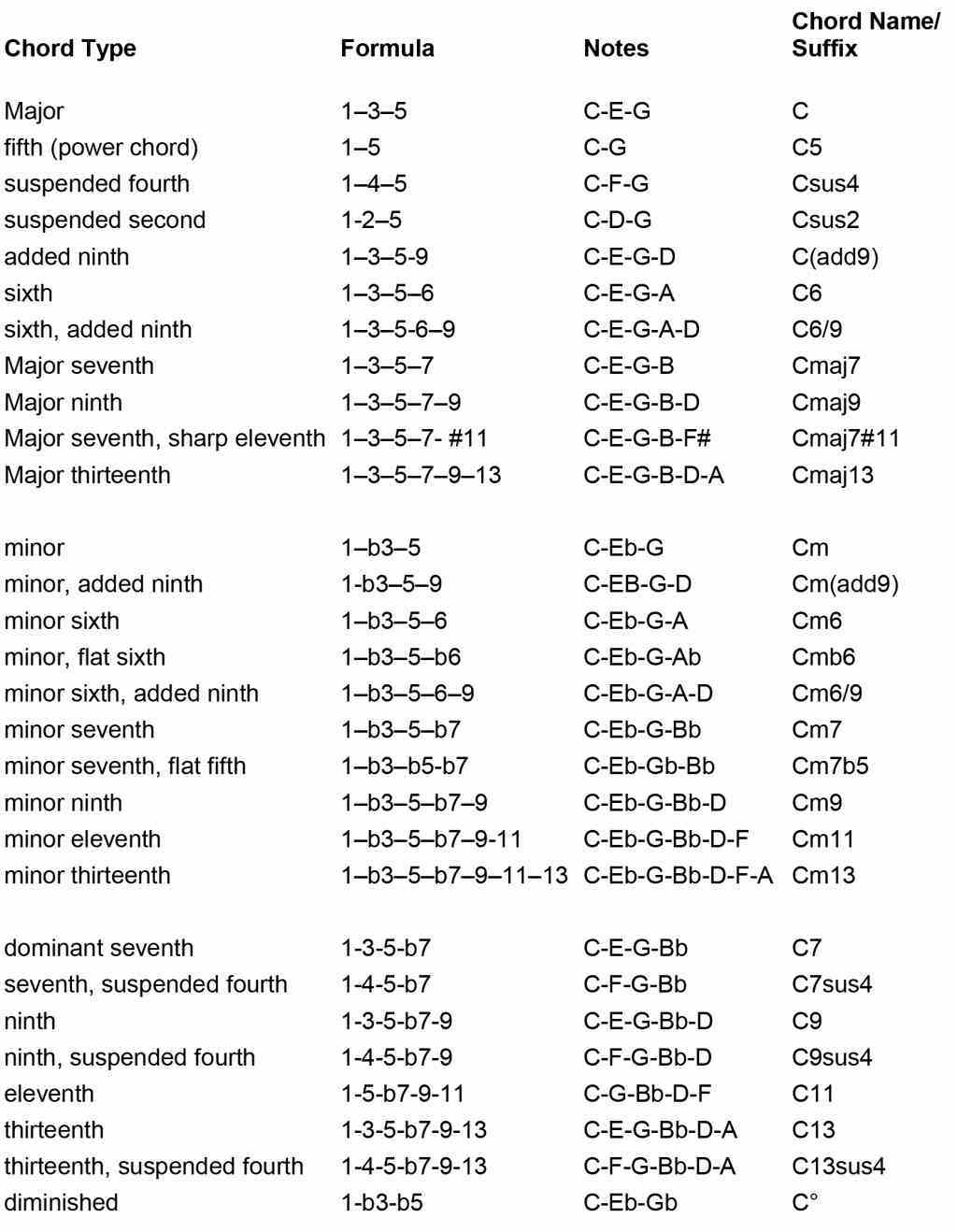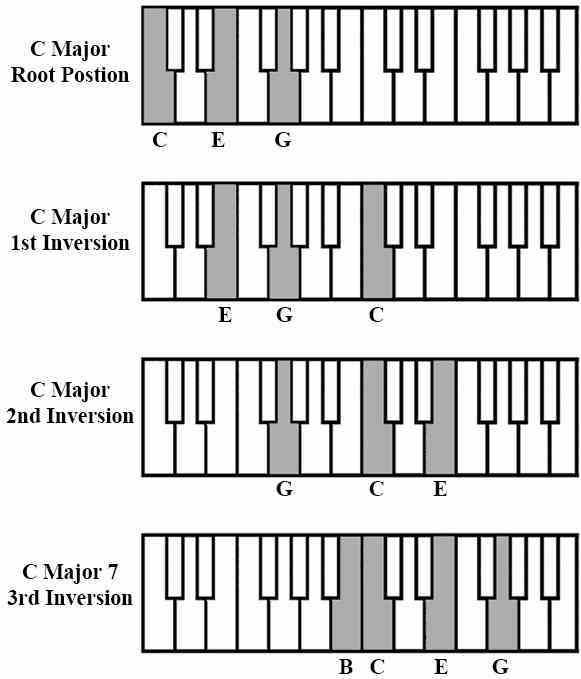Building Chords
In the previous lesson, about scales, we narrowed down the number of pitches that can be used to compose an entire song. In this lesson we will use C Major Scale to build chords. Chords are two or pitches played at the same time to create a harmonic sound. Every chord contains a root note and at least one more note to harmonize the root note. There are dozens of different chords that can be build using a single scale. The most popular types of chords are the major chords, minor chords and the diminished chords. These are called triads because they use three different notes. Other popular, but more advance, chords are the major 7th chords, major 9th chords and sus chords.
Just as scales use a formula to build the scale chords are build using formulas as well. The formula for building a major chord is 1 – 3 – 5, the formula for building a minor chord is 1 – b3 – 5 and the formula for building a diminished chord is 1 – b3 – b5. All three of these type of chords consist of 3 notes but what gives each chord a unique characteristic is the distance between each note. The ‘1’ note is the root note. The ‘3’ note is the 3rd pitch from root. The ‘5’ is the 5th pitch from the root. The ‘b‘ in the formula indicates that the distance between that note and the root note has been cut short a half step. Let’s build some chords using the C Major Scale.
The notes that make up the C Major Scale are C — D — E – F — G — A — B. Below is and image of 7 basic chords built using these notes as the root note.

7 basic C Major Scale triad piano chords minor diminished
The first thing you should notice about the chart above is the three basic triads, major, minor and diminished. Lets analyze the C Major chord first. Notice that there are three keys between the root note ‘C’ and the 3rd note ‘E’ and two keys between the 3rd and the 5th note ‘G.’ This is true to the F Major chord and the G Major chord.
Now lets take a look at the D minor chord. The 3rd note ‘F’ is flattened a semitone leaving only two keys between the root note ‘D’ and the 3rd note and now there is three keys between the 3rd note and the 5th note ‘A.’ That is what makes that chord a minor as well as E minor and A minor.
A diminished chord is similar to a minor chord except the 5th note is also flattened leaving two notes between the root note and the 3rd note and two keys in between the 3rd note and the fifth note as shown in the B diminished chord.
The last thing to take note of is that all the chords use only notes that make up the C Major scale. So in the example of C Major Scale we only use C – D – E – F – G – A – B which are all white keys on a piano.
Below is a chart of the many different chords you will learn how to play using our piano and bass cheat sheets. In the chart you can find the chord types, formulas used to get that chord, the notes that make up that chord and the chords suffix.

List of chord types names suffix formulas and notes
Chord Inversions
The idea of inversions in simply to rearrange the order of the notes in a chord. There are three main types of inversions root position, 1st inversion and 2nd inversion. Root position is the chords natural way of playing the triad.
Below is an image of C Major chord played 3 different ways.

Inverting triads chords root 1st second
Notice how the ‘C’ note has been moved up and octave in the 1st inversion. The chords notes are still C – E – G however the ‘C’, which is usually the bass note, has been taken out of its root position and is now a higher note. ‘C’ is still the root note, however, ‘E’ is now the bass note. In C Major 2nd inversion the ‘E’ note get moved up and octave and ‘G’ is now the bass note.
Inversions can help transition between chords and can even be used just to spice up the harmonics sound of the chord. But the main idea is that chords don’t only have to be played in root position.